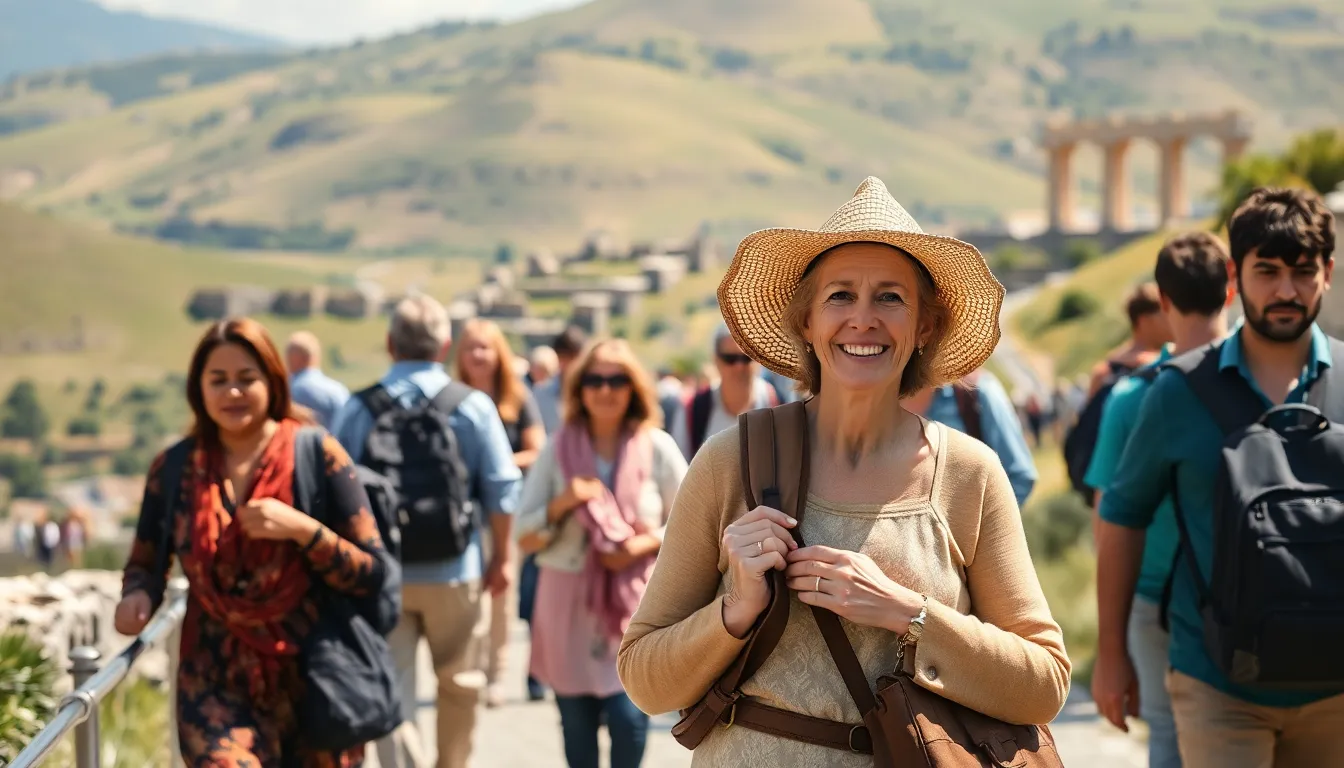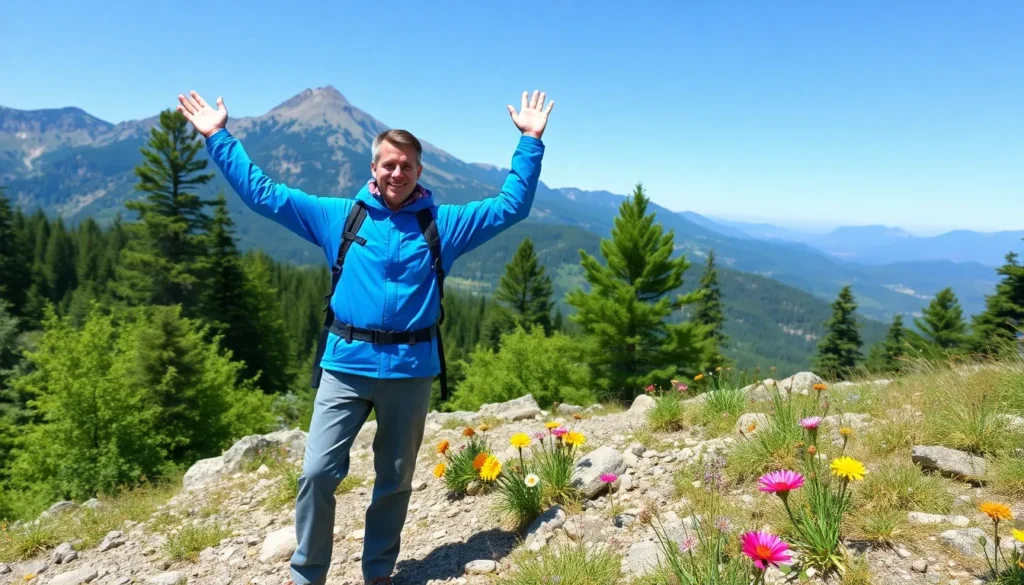Imagine trading your daily grind for a trek that’s both spiritual and adventurous. Religious pilgrimage travel offers a unique blend of soul-searching and sightseeing, where every step leads to enlightenment—or at least a good selfie. From the bustling streets of Jerusalem to the serene paths of the Camino de Santiago, these journeys invite travelers to connect with their faith while exploring the world’s most sacred sites.
But it’s not just about the destination; it’s about the experience. Pilgrimage travel transforms ordinary vacations into extraordinary quests, filled with stories, laughter, and perhaps a few blisters. Whether seeking spiritual renewal or simply craving a break from the mundane, these adventures promise to leave a lasting impact. So pack your bags, lace up those hiking boots, and get ready to embark on a journey that’s as much about the path as it is about the purpose.
Table of Contents
ToggleOverview Of Religious Pilgrimage Travel
Religious pilgrimage travel encompasses journeys undertaken for spiritual enrichment. Such travels frequently lead to sacred sites recognized in various faiths. Famous destinations include Jerusalem, Mecca, and the Camino de Santiago, each attracting millions of pilgrims annually. Travelers embark on these journeys to deepen their faith and experience profound connections with their beliefs.
Exploration of sacred landmarks often involves historical and cultural education. Sites like the Western Wall and the Vatican carry significant meaning, enriched by the stories of those who visited long before. Pilgrimage routes offer unique landscapes, from serene countrysides to bustling cities, enhancing the overall experience.
Motivations behind religious pilgrimages vary among individuals. Some seek personal healing, while others aim to fulfill a religious duty or enhance their community ties. Shared experiences among pilgrims foster a sense of belonging, transcending individual beliefs and backgrounds.
Preparation plays a vital role in pilgrimage travel. Many travelers research their destinations, focusing on itineraries that include prayer times and local customs. Engaging with local communities enriches the trip’s significance and supports cultural exchange.
Understanding the importance of intention shapes the pilgrimage experience. Each step taken holds potential for reflection and personal growth. Ultimately, religious pilgrimage travel provides an opportunity for deeper exploration, allowing individuals to align their spiritual desires with tangible experiences.
Historical Significance

Religious pilgrimage travel holds deep historical significance, reflecting faith’s influence across centuries. These journeys connect individuals with their spiritual roots while fostering cultural exchange.
Evolution Through the Ages
Religious pilgrimages date back to ancient civilizations. People sought holy sites for spiritual enlightenment, devotion, or healing. Over time, these journeys transformed into structured practices within various faiths. Many traditions, like the Hindu Kumbh Mela and Islamic Hajj, evolved to include rituals and communal experiences. Each pilgrimage contributed to the rich tapestry of religious history, shaping beliefs and fostering connections within communities.
Major Historical Pilgrimages
Notable expeditions shaped faith development and cultural identity. The Camino de Santiago, a medieval pilgrimage route, became a symbol of Christian devotion. Thousands journeyed to Santiago de Compostela to seek absolution or fulfill vows. Similarly, the Hajj to Mecca remains a cornerstone of Islamic practice, attracting millions annually. Jerusalem’s sacred sites draw Christians, Jews, and Muslims, uniting diverse faiths through shared history. Each pilgrimage intertwines spiritual significance with cultural heritage, creating lasting impacts on communities and individuals alike.
Popular Destinations for Pilgrimage
Religious pilgrimage travel encompasses various sacred sites that hold immense significance across multiple faiths. Travelers often seek these destinations to deepen their spiritual journeys and connections.
Sites of Major Religions
The Western Wall remains a cornerstone for Judaism, drawing millions yearly to reflect on its rich history. Christians flock to the Vatican, home to St. Peter’s Basilica and the papal presence. For Muslims, Mecca stands as the ultimate pilgrimage site, with the Kaaba at its heart, attracting approximately 2 million pilgrims during Hajj. Bodh Gaya, a key location for Buddhism, marks the site of Buddha’s enlightenment, forming an essential destination for Buddhist pilgrims. Each site offers profound experiences and opportunities for spiritual growth.
Regional Highlights
In Europe, the Camino de Santiago spans various routes leading to Santiago de Compostela, famed for both its history and natural beauty. India hosts the Kumbh Mela, one of the world’s largest gatherings, occurring every 12 years at four sacred rivers. Japan features the Kumano Kodo, an ancient trail connecting numerous shrines, emphasizing the serene beauty of its landscapes. South America showcases the pilgrimage to Machu Picchu, often associated with the Incan spiritual journey. Each region boasts unique destinations that resonate deeply with those on a quest for spiritual fulfillment.
Benefits of Religious Pilgrimage Travel
Religious pilgrimage travel offers numerous benefits, enriching the experience through spiritual insights and cultural exchanges. Travelers often find profound transformations during these journeys.
Spiritual Growth
Pilgrimage journeys provide a pathway for deep spiritual reflection. Participants engage in rituals and practices that enhance their connection to faith. Each destination holds historical importance, fostering contemplation and renewal. Many individuals report personal healing after immersing themselves in sacred environments. Prayers offered and meditation practiced lead to greater clarity and purpose. Those on pilgrimage often experience shifts in perspective, enabling them to return with renewed faith and commitment. The unique atmosphere of sacred sites creates a lasting impression, emphasizing the importance of intention in every step taken.
Cultural Exposure
Pilgrims encounter diverse cultures through their travels. Immersion in local customs enriches their understanding of global spiritual practices. Interaction with fellow pilgrims and locals fosters a sense of community. Each region’s traditions reflect the unique historical narratives that shape religious beliefs. Festivals and events, such as the Kumbh Mela, expose travelers to vibrant practices and communal celebrations. Language, food, and art provide additional layers of connection, making the pilgrimage experience even more meaningful. Exposure to different perspectives enhances appreciation for shared human experiences while promoting respectful dialogue among diverse faiths.
Planning Your Pilgrimage Journey
Effective planning enhances the pilgrimage experience. Many aspects contribute to a successful journey.
Tips for Preparation
Research destinations thoroughly for a smoother pilgrimage. Pilgrims should familiarize themselves with local customs, traditions, and important dates. Mapping out the route before departure can prevent unexpected challenges. Allow time for rest and reflection during the journey, as it fosters deeper spiritual connections. Engaging with fellow travelers or local communities can create meaningful exchanges that enrich the experience. Securing necessary permits or bookings in advance also eases the travel process.
Considerations for Travelers
Travelers must consider their physical and mental readiness for the challenges ahead. Prioritizing comfort through suitable footwear is vital for long-distance walks. Packing essential items, such as water bottles and first-aid kits, ensures safety along the way. Embracing flexibility in plans allows for spontaneous experiences and personal growth. Understanding the cultural significance of each site visited enhances the overall appreciation of the pilgrimage. Maintaining openness to new perspectives can lead to profound insights and connections.
Religious pilgrimage travel offers a unique opportunity for spiritual growth and cultural connection. By embarking on these journeys, travelers not only visit sacred sites but also engage in meaningful reflection and personal transformation. The experiences gained along the way can deepen one’s understanding of faith and foster a sense of community among diverse cultures.
With careful planning and an open heart, individuals can navigate these enriching paths. Each pilgrimage serves as a reminder of the profound impact that spiritual journeys can have on one’s life. Whether seeking healing, fulfillment, or connection, the significance of these travels resonates far beyond the destinations themselves.









